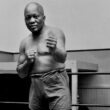LAS VEGAS — The theme of the Mets offseason is run prevention, which is really just a fancy word for defense. For a team with some great individual defenders, the Mets played some mind-boggling bad defense at times in 2025.
Yes, there were great plays made and games that were saved by outstanding defensive efforts, but the little things the Mets failed to do resulted in the Mets giving up an average of 4.41 runs per game. As a team, the Mets had a total fielding run value of -6, and finished the season with -13 outs above average. In 2024, the Mets had 6 outs above average over the course of the regular season.
The bottom line: Every player on the roster has to improve their abilities to field their positions cleanly. This is the message from president of baseball operations David Stearns.
“We’re going to need our current group of players to play better defense,” Stearns said in Las Vegas this week at the MLB General Manager meetings. “The brand of baseball — the brand of defense — that we played over the last two months of the season wasn’t close to good enough. It has to get better.”
The question now becomes, how can the Mets get better? How can a team full of veterans get to a place where they can limit the fundamental miscues and mental mistakes that allow their opponents to take extra outs and create extra runs?
“I think the first thing is the recognition that it’s just as important as offense,” Stearns said.
Stearns sees an over-reliance on offensive production. You can’t win games if you don’t score runs, and you won’t stay in the lineup if you’re not helping the team score runs. Stearns doesn’t see this as a Mets-specific issue, rather a league-wide line of thinking.
“This is not just the Mets, it’s everywhere because offense is so much easier to see,” Stearns said. “Scoring runs is so much easier to see, in some ways, and easier to measure, than preventing runs, especially defensively, that we focus so much of our training time and our efforts and our energy on, how can I get better offensively? How can I get the most out of myself on any given day from an offensive production standpoint? At times, we forget about the other side of the ball.”
Too often last season, manager Carlos Mendoza lamented the state of the Mets’ defense. A former infielder and infield coach, the skipper was clearly frustrated by the end of the season. The outfielders weren’t cutting down runners, the infielders were bobbling routine grounders, the catchers were losing track of the play and the pitchers weren’t backing up plays.
These were things they practiced and drilled, not just in spring training, but deep into the season.
In terms of metrics, Francisco Lindor had one of the worst seasons of his career. Injuries likely played a role. Despite the shortstop’s insistence that the broken pinky toe suffered in early June wasn’t a hindrance in any way, Stearns thinks it affected his lateral movement, which would explain the -5 OAA moving laterally toward the third-base side. Late in the season, it was elbow discomfort he struggled through.
Lindor recently had a cleanout procedure and is expected to be ready by spring training.
“I think when you combine those, and you’re playing every single day at the major league shortstop, it’s going to cause you to probably not make a couple of plays that you normally would make,” Stearns said.
Tyrone Taylor is still penciled into center field, despite the availability of free agent center fielder Cody Bellinger, who possesses a far superior bat. But Taylor is a plus-defender and provided insurance for Juan Soto in right field. Soto didn’t mind that Taylor took balls away from him in right-center field at times, mostly marveling at his ability to track tough fly balls and properly time diving catches.
However, Soto’s defense was a problem last year. Brandon Nimmo didn’t provide the same defense in left field the Mets have become accustomed to. Stearns made no excuses for two of the team’s cornerstone players, and he’s confident they’ll have better seasons in 2026.
That confidence comes from their willingness to be coached, their past performances and a new coaching staff. Stearns called Kai Correa, the club’s new bench coach, “one of the best defensive coaching minds in the game.”
The Mets still value positional flexibility, and Stearns doesn’t want to sacrifice any versatility. This means Jeff McNeil might play as much center field as he did last season, and Brett Baty will likely play more third base than second. The starting rotation is heavy on ground-ball pitchers, but the swing-and-miss arms like Nolan McLean are on their way.
Offseason plans can change after the GM manager meetings when executives get a feel for the talent available and identify league trends. For the Mets, nothing has changed. The priority is still defense.
“Step 1 is ensuring that we all understand how important the other side of the ball is,” Stearns said. “Step 2, I think we’re very excited about the coaching staff we’re putting together to help our players get better defensively.”








